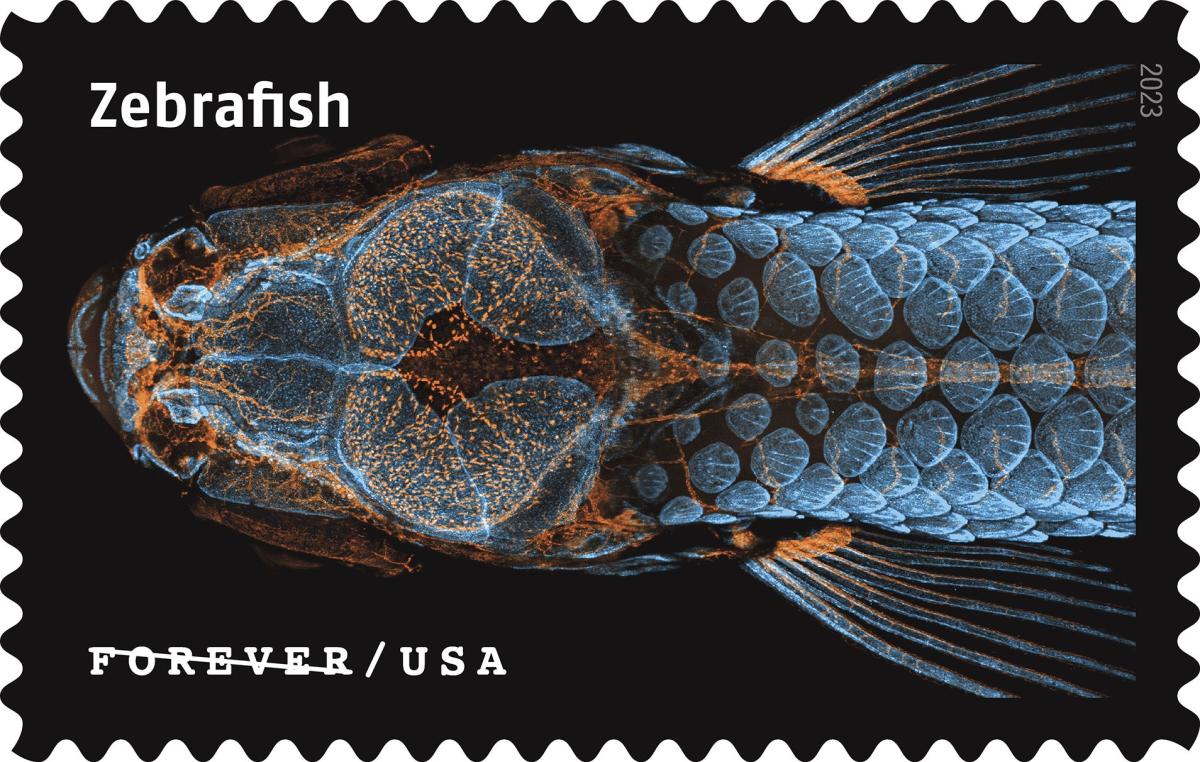Photographic Moment
NIH Zebrafish Research Included in U.S. Postal Service’s “Life Magnified” Stamps

CREDIT: DANIEL CASTRANOVA, NICHD
A microscopy image created by NIH researchers is part of the “Life Magnified” stamp panel issued on August 10 by the United States Postal Service. The NIH zebrafish (Danio rerio) image, which was taken to understand lymphatic vessel development in the brain, merges 350 individual images to reveal a juvenile zebrafish with a fluorescently tagged skull, scales, and lymphatic system.
“Zebrafish are used as a model for typical and atypical human development. It is surprising how much we have in common with zebrafish,” said Diana Bianchi, Director of the Eunice Kennedy Shriver National Institute of Child Health and Human Development (NICHD), which generated the image. “NIH research affects our lives every day. My hope is that this postage stamp will help spur conversations and appreciation for the importance of basic science research.”
The image was taken by NICHD’s Daniel Castranova, Senior Research Assistant, with assistance from former trainee Bakary Samasa. The research was conducted in the Section on Vertebrate Organogenesis, led by principal investigator Brant Weinstein. The lab is devoted to understanding mechanisms guiding the formation of blood and lymphatic vessels. The image also received top honor in the 46th annual Nikon Small World Photomicrography Competition in 2020.
Findings from the microscopy image were published in Circulation Research and featured on the journal’s cover. The work led to a groundbreaking discovery that zebrafish have lymphatic vessels inside their skull. These vessels were previously thought to occur only in mammals, and their discovery in fish could expedite and revolutionize research related to treatments for diseases that occur in the human brain, including cancer and Alzheimer’s.
This page was last updated on Thursday, September 7, 2023
